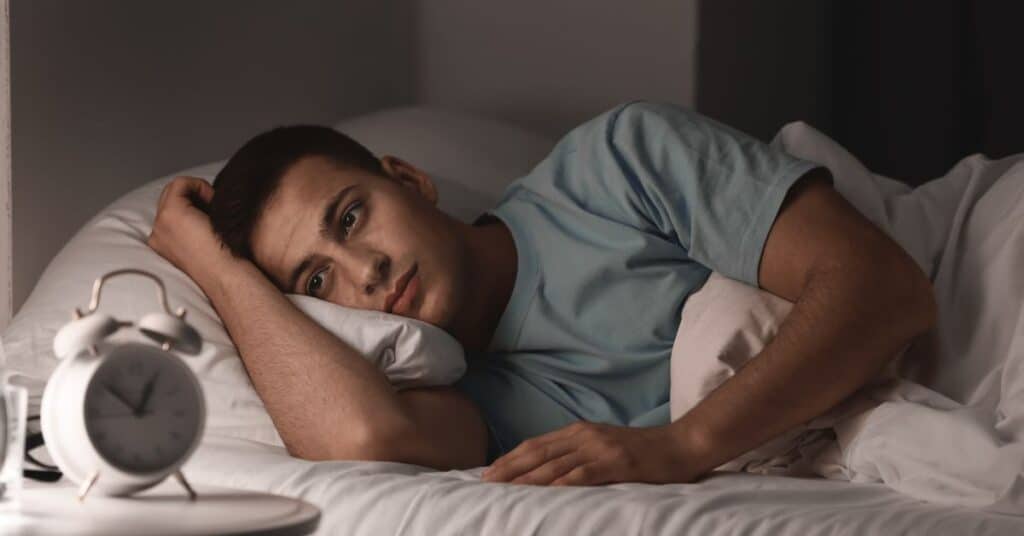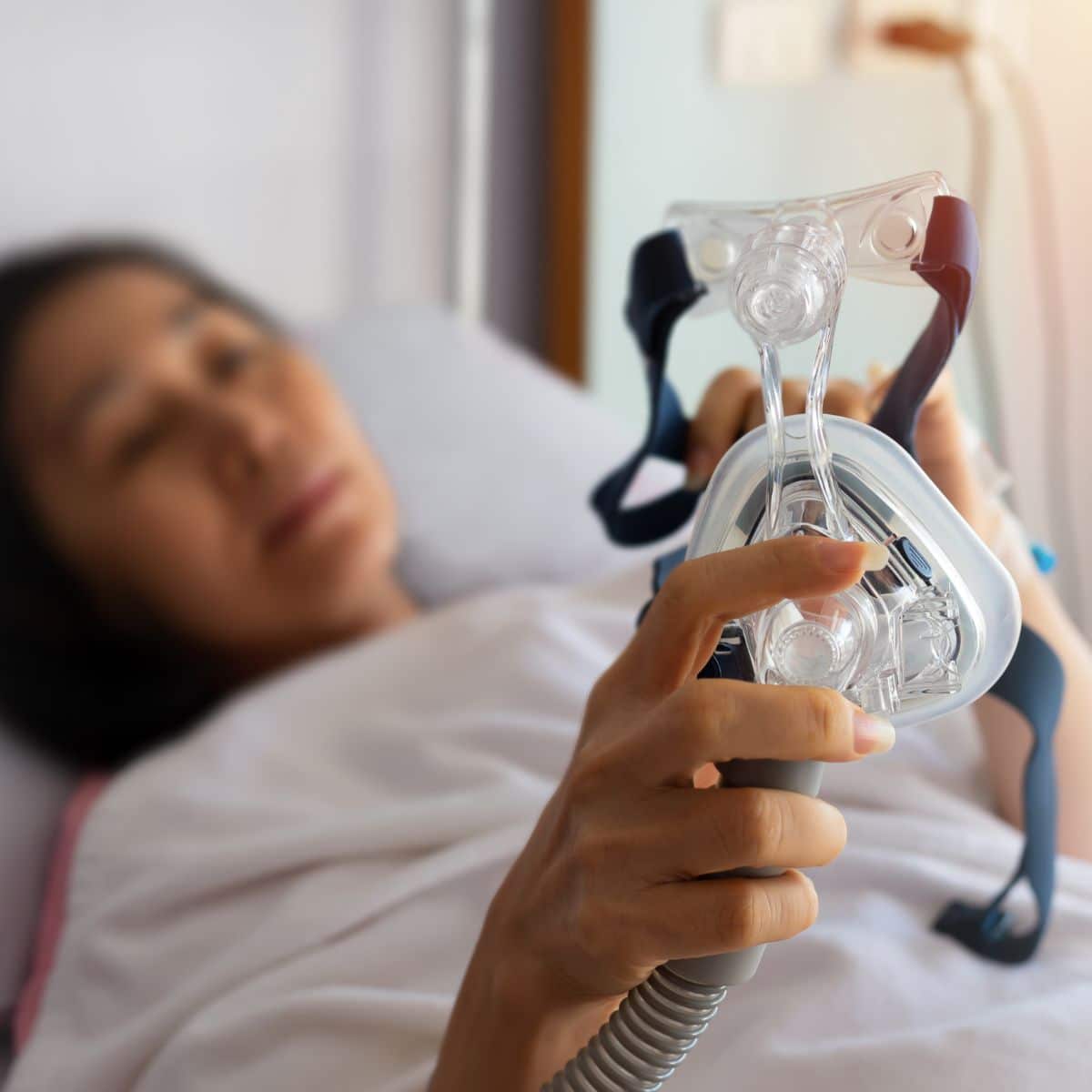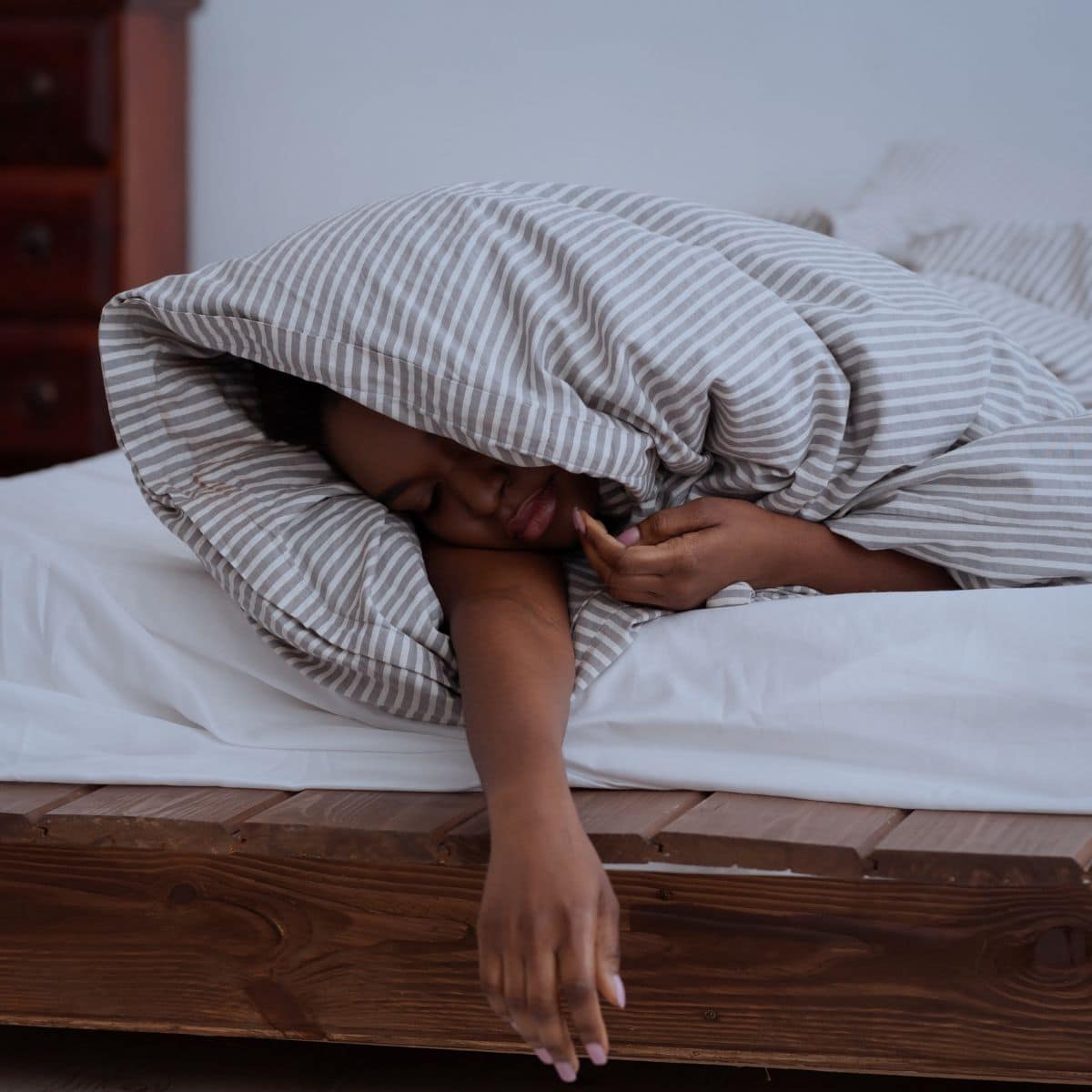

Sleep apnea is a medical condition affecting an increasing number of people in Western countries. Currently, the prevalence of moderate to severe sleep-disordered breathing conditions in U.S. adult men is 10%-17% and in U.S. adult women is 3%-9%.[1] More specifically, obstructive sleep apnea-hypopnea affects 2%-7% of the adult population.[8] These figures have increased steadily along with the rising obesity epidemic.
Why is sleep apnea a problem? Because it increases the risk of several other chronic health conditions including daytime sleepiness, cognitive dysfunction, poor work performance, high blood pressure, abnormalities in glucose metabolism, anxiety, impotence, fatal and nonfatal cardiovascular events, and even one’s overall risk of death.[2][3][4] Cardiovascular disease risk is actually estimated to be 2.5 times higher in people suffering from moderate to severe obstructive sleep apnea.[8]
Needless to say, not sleeping well due to a sleep-related breathing disorder is serious business, and it needs to be addressed and treated properly to avoid further harm.

Obstructive sleep apnea (OSA), otherwise commonly referred to as sleep apnea, is a condition involving frequent episodes of upper airway collapse while sleeping. This results in a person not being able to breathe while their airway is blocked. The complete obstruction of the airway typically occurs when the tongue and soft palate collapse against the back of the throat, blocking airflow to the lungs.
People with sleep apnea have at least 15 episodes or more of not being able to breathe each hour while they are sleeping.
An apnea is defined as the inability to breathe for at least 10 seconds.[2] People with sleep apnea have at least 15 episodes or more of not being able to breathe each hour while they are sleeping. This results in them “waking up,” as their body is aroused to unblock their airway and “reset” their breathing.
Consequently, individuals with OSA are not able to sleep soundly nor deeply throughout the night like a normal individual would. This leads to chronic daytime sleepiness, fatigue, and a number of other medical conditions as these individuals fight constant sleep deprivation.
Sleep apnea treatment is typically determined by the severity of the condition. This is done by measuring the number of apnea (loss of airflow) and hypopnea (reduction in airflow) episodes per hour. More than 20 events per hour warrants treatment, as this amount of episodes is associated with higher mortality rates long term.[5] However, some patients with as little as 5 episodes per hour may benefit from treatment if they complain of daytime sleepiness or have a comorbid condition like heart failure.
Currently, no medications have been proven safe and effective for sleep apnea. Instead, available treatment options include diet and lifestyle modifications, oral appliances (mouth guards), continuous positive airway pressure (CPAP) therapy, and surgery.[5]
Simple lifestyle modifications can help improve mild cases of sleep apnea. These include learning to breathe through the nose instead of the mouth to prevent the jaw from dropping back against the throat and obstructing airflow. Correcting underlying reasons for nasal obstruction such as polyps, allergies, or a deviated septum may be required before practicing this technique to be successful.
Some individuals may benefit from becoming side sleepers instead of sleeping on their back. Raising the head of the bed may also help. These methods help keep the tongue and soft palate from falling back against the throat and obstructing airflow, although they don’t work for everyone.
Smoking, alcohol, and the use of sedatives (sleeping pills and pain medication) should be avoided. These all increase the incidence of restricted or obstructed airflow and sleep apnea.[2][5]

Obesity plays a large role in the majority of patients with sleep apnea. There is a 40% prevalence rate of sleep apnea in overweight men, and this increases to 40%-90% in obese men with a BMI greater than 40 kg/m².[6] Anyone who is overweight or obese is more at risk for sleep apnea. In fact, more than 60% of patients referred for a diagnostic sleep evaluation are overweight or obese.[2] Needless to say, a big improvement can be made in patients suffering from sleep apnea just by losing weight. This should be the primary focus of any patient who is overweight or obese and suffering from sleep apnea.
While bariatric surgery has been successful in treating sleep apnea in patients, it also comes with risks, as any surgery does.[7] A safer and better alternative to tackling the obesity factor of sleep apnea is to lose weight naturally over the long term. While many diets exist to lose weight, a whole food, plant-based diet works best to achieve long-term, sustainable weight loss. It’s not only been proven to help people lose weight, but it’s also been shown to prevent, halt, and even reverse many of our common chronic diseases such as heart disease, diabetes, and some forms of cancer.
Losing weight is so helpful in sleep apnea that a mere 10%-15% loss in body weight results in a 30%-50% reduction in sleep apnea severity.[6] If you are overweight or obese and weigh 200 lbs, losing 20 lbs will likely reduce your sleep apnea symptoms by approximately a third to a half. That’s a huge return for your efforts, and all without any negative side effects.
You may have heard that a person’s diabetes risk increases with excess belly fat. The same holds true for sleep apnea. Having excess body fat around the neck, waist, and abdomen increase the chances of having sleep apnea.[6] This stands to reason because excess body fat in these areas can either restrict the airway further or make breathing more difficult in general. Losing fat in these areas can therefore be particularly helpful in those patients with sleep apnea.
To learn more about losing weight (and, therefore, reducing your risk of sleep apnea) please visit my page on obesity for tips and advice to help you succeed in your weight-loss journey.
Oral appliances or mouth guards are often used to treat less severe cases of sleep apnea on the order of mild to moderate in severity. They can also be used to treat patients who cannot tolerate CPAP devices or who fail other therapy.
Oral appliances work by moving the jawbone and tongue forward while a person sleeps, thereby keeping the tongue from collapsing onto the back of the throat. This helps keep the airway open and unobstructed, allowing the flow of air back into the lungs. These devices have to be specially made to fit each individual’s mouth in order to be effective. This is usually done by a dentist or other oral healthcare professional.
Oral appliances have been proven effective in reducing severity of sleep apnea as well as in reducing excessive daytime sleepiness.[8],[9] They have not yet been shown to reduce cardiovascular disease associated with sleep apnea though.
Long-term compliance can be an issue with these devices, and, obviously, if the devices aren’t used by the patient, then they are of no benefit.
Continuous positive airway pressure (CPAP) therapy is considered the gold standard for sufferers of sleep apnea, particularly in moderate to severe cases of the disease. CPAP has been proven more effective in reducing severity of sleep apnea and excessive daytime sleepiness over both oral appliances or no therapy.[8] CPAP therapy has also been shown to improve quality of life and functional status in individuals, reduce cardiovascular disease risk, and reduce motor vehicle crashes in those suffering from sleep apnea.[5],[8]
CPAP therapy involves a machine with a fan that blows air under pressure (via a mask) into the nostrils and/or mouth of the patient. This positive air pressure naturally keeps the airway and back of the throat open to allow for continual airflow into the lungs. The masks used in CPAP therapy can cover just the nostrils or both the nostrils and mouth at the same time.
Wearing a mask while sleeping throughout the night can be uncomfortable for some patients. It also has side effects for some individuals which include nasal symptoms (dryness, congestion, runny nose), air leakage from the mask, claustrophobia, skin abrasions, pink eye, and pressure on the face.[5] Because of these reasons, long-term compliance can be an issue with the CPAP device. Up to 50% of patients will not wear the mask throughout the whole night, and, therefore, will not benefit from this therapy.
Surgical procedures to treat sleep apnea include, but are not limited to, bariatric surgery, nasal passage surgery, soft palate surgical techniques, and jaw surgery.[10],[11] All surgeries carry risks with them and involve a recovery period that may last from several weeks to months before the patient returns back to normal. Because of the risks and recovery time, surgery is usually of last resort for patients who’ve failed all other forms of treatment.
Soft palate surgeries involve the removal or remodeling of soft tissue in the throat, which may or may not include the tonsils and adenoids. This type of surgery has a surgical success rate of 50% and cure rate of 16%.
Jaw surgery involves surgically adjusting the placement of the lower and upper jaw by moving it forward to open up the airway again. This surgery results in a long recovery period. For at least two weeks the patient is only allowed to be on a liquid diet. Chewing is not allowed for 4-6 weeks. The surgical success rate is 86% and cure rate is 43% with this type of surgery.
Bariatric surgery has been proven to lessen the severity of sleep apnea by fostering weight loss in obese individuals. However, sleep apnea reoccurs in at least 40% of patients undergoing this surgery.

Obstructive sleep apnea is a medical condition that can severely impact the quality of life for those who suffer from it. Excessive daytime sleepiness occurs in most individuals, and many other chronic diseases can also go hand-in-hand with it, most notably hypertension and cardiovascular disease.
While there are no medications to treat this disease, there are several other options, both in the form of diet and lifestyle modifications and in conventional methods using CPAP therapy or mouth guards. CPAP therapy is the mainstay of treatment for most patients with sleep apnea, but it often is not successful long-term due to poor compliance.
The primary focus of a successful long-term treatment regimen for patients with sleep apnea should target sustained, permanent weight loss and subsequent lifestyle adjustments. Adopting a whole food, plant-based diet can help patients accomplish this without subjecting people to difficult-to-sustain, calorie-deprivation diets. That’s why it’s so successful in helping people lose weight because individuals can eat as much as they want of whole, plant-based foods and still keep the weight off.
In addition, multiple other health benefits will be experienced by those adopting this way of eating and living. To learn more about a whole food, plant-based diet and lifestyle, feel free to look around this website with its invaluable tools and resources to help you achieve a life of optimal health and sound, restful nights.
Copyright 2026 Center for Nutrition Studies. All rights reserved.